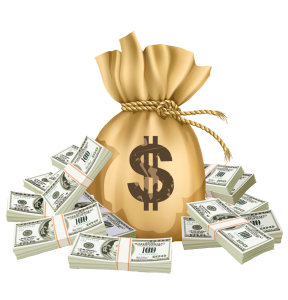When To Cash Out Refinance
A cash out refinance replaces your existing home loan with a new loan whose amount is more than your existing mortgage balance. You get the difference between the two loans in cash, and you can use the money on home improvements, consolidating debts, or other financial obligations.
How Does a Cash Out Refinance Work in Panama City, FL?
When you get a traditional refinancing, you replace your existing loan with a new mortgage for the same balance, either for a shorter loan term or at a lower rate or both. When it comes to cash out refinancing, you withdraw a certain amount of your home equity in a lump sum. The interest rates are a bit higher because you are getting a more significant loan amount. A cash out refinance pays you the difference between the mortgage balance and your home’s value. The lenders limit the cash out amount to 80% or 90% of your total home value, because you cannot pull out 100% of the value of your home to ensure that you have an equity cushion.

Why Should I Get a Cash Out Refinance?
There are many benefits of a cash out refinance compared to other types of mortgage options when you want a large amount of money. Here are some of the advantages of refinancing with cash out:
- The lower interest rate on your mortgage cash out refinance Panama City
The main reason why most people take a traditional mortgage refinance is that it gives lower rates than other loan options such as a home equity loan or home equity line of credit. It also makes sense for a cash refinancing because you will get a higher loan amount with a lower interest rate compared to the old mortgage.
- Debt consolidation and pay off
You can use the money from a cash out refinance to offset high interest mortgage debt, a sensible move, although you should confirm that the calculation balances. It is advantageous to reduce the rate charged on your existing mortgage and make proper use of the money you cash out.
- Carry out value-added home remodeling and innovations to your house
You can use the cash out refi to do these projects, which will reduce the mortgage interest from your tax when your home value increases. Additionally, leveraging your equity is not as costly as other financing methods, such as personal loans, credit cards, or home equity loans.
- Enables you to pay college fees
If you have a child or children in college, you can pay for the college fees using your refinancing, especially when the student loan rates are higher than what you are getting from a refinance. When you have a high interest rate debt, you can get the math to see if you can pay off the debt if you refinance with cash out.
- Increased credit score
Settling your debts, especially your credit cards in full using a cash out refinance, helps improve your credit profile through a reduction in your credit utilization ratio.
Disadvantages of getting cash out refinancing
- Risk of foreclosure
Regardless of how you use the money from a cash out refinance, if you default the loan, there are high chances of losing your property to the lender. Remember that you used your home as the collateral to get money to pay off debts such as credit card debt, unsecured debt with a secured debt. Take just the amount you need and spend on things that will increase your finances.
- Increase in the interest rate of your old mortgage
The main reason we go for refinancing is to improve our financial standing and secure a lower rate. However, that may not always be the case because a refinance may end up hiking your interest rates.
- Re-establishes private mortgage insurance
Some lenders will allow you to borrow more than 80% of your home equity, and you will end up paying for PMI. This will increase your cost of debt in the long run compared to other financing options. A PMI can cost anything between 0.55% and 2.55%.
- Closing cost
Just like any other refinancing, you will still pay closing costs for a cash out refinance. Ensure that you have enough savings to meet the cost.
- Encourages bad habits
The idea of settling your credit card using cash out refinance can give you the temptation to run up your credit card balances again.
How Much Money Can I Get from a Cash Out Refinance?
Lenders will allow you to borrow up to 80% of your home equity; however, the amount you get will be determined by the type of mortgage and your credit score. If you have an FHA loan, you might get a refinance option that allows you to borrow up to 85% of your home’s value from lenders offering loans secured by the Federal Housing Administration in Panama City. Additionally, if you are getting cash out refi for VA loans, they are available for up to 100% of your home’s value.
Fees for a Cash Out Refinancing
You could be charged closing costs from 3% to 5% of the new mortgage amount. The closing cost will take care of the lender’s origination fees and appraisal fees to assess your home’s current value. Compare with different lenders for the most favorable terms and rates. You can roll the loan expenses into your new loan to get rid of upfront closing costs, although such a move can increase your rates. Getting an additional 30-year loan or refinancing with a higher rate means that you will pay more in terms of total interest. Work it out before making a decision and see what works to your advantage.

Other Local Areas We Help With Buying A Home In Florida
Alternatives to a Cash out Refinance
There are other options you can take instead of a cash out refinance. They include:
- Reverse mortgage Panama City, FL
This is available for homeowners aged 62 or more. They can withdraw cash from their home equity, and the balance can remain unpaid if the borrower lives in the home as the primary residence and pays property taxes and homeowners insurance.
- Home equity line of credit
HELOC can be a better option when you need money for a renovation project that spreads over a few years. A HELOC interest rate keeps changing with the market rate since you are allowed to borrow money when you need it using a revolving line of credit, like a credit card.
- Home equity loan Panama City, FL
A home equity loan is a second mortgage where you get a lump sum amount upfront and a fixed interest rate, and you are required to make monthly payments. In a Wrap, A cash out is worth it only when you get a higher amount with lower rates, and you make sound use of the funds to get returns on your money. However, getting a refinance for your holiday trip or buying a new car is a bad idea that will not give you any returns. It is sensible to use the money for your home renovations, which will rebuild the equity you are taking out. Remember, you are borrowing against your home, and you have to repay the new mortgage on time to avoid getting in foreclosure.
Local information about Panama City in Florida
Panama City is a city and the county seat of Bay County, Florida, United States.[6] Located along U.S. Route 98, it is the largest city between Tallahassee and Pensacola. It is the more populated of two principal cities of the Panama City-Lynn Haven, Florida Metropolitan Statistical Area. As of the 2010 census, the population was 36,484.[7] The city was catastrophically damaged when Hurricane Michael made landfall as a Category 5 hurricane on October 10, 2018. When Panama City was incorporated in 1909, its original city limits were 15th Street (Hwy 98) on the north, Balboa Avenue on the west and Bay Avenue on the east.
The development in this once unincorporated part of Northwest Florida had previous names such as Floriopolis, Park Resort, and Harrison.[8] In 1906, the development was named Panama City and it was first incorporated as Panama City in 1909. When Panama City was incorporated in 1909, its original city limits were 15th Street (Hwy 98) on the north, Balboa Avenue on the west and Bay Avenue on the east. According to the Panama City Public Library’s A History of Panama City,[9] George Mortimer West hoped to spur real estate development in Bay County during a period of intense popular interest in the construction of the Panama Canal by changing the town’s name from Harrison to Panama City, because a straight line between Chicago and the capital of the Central American country of Panama intersected the Florida town. Additionally, since required meanders around land formations in a seaborne route to the canal added distance when starting at other ports, Panama City was the closest developed port in the US mainland to the Caribbean entrance of the Panama Canal.
